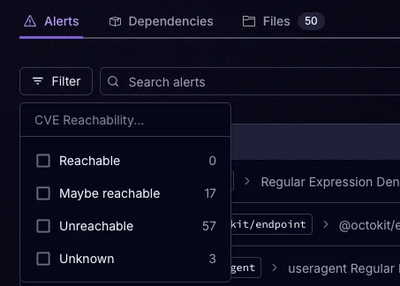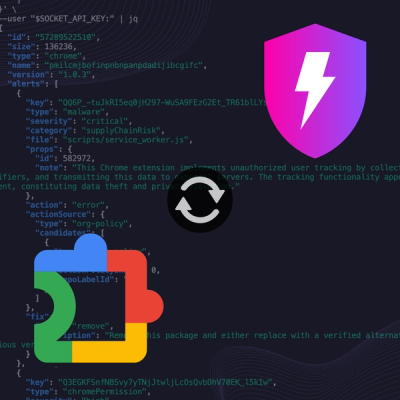
Product
Introducing Rust Support in Socket
Socket now supports Rust and Cargo, offering package search for all users and experimental SBOM generation for enterprise projects.
Simple and pluggable dashboards.
var Dashboards = require('dashboards');
var dashboards = new Dashboards()
.use(subscriptions('stripe-key'))
.use(charges('stripe-key'))
.use(support('helpscout-key'))
.use(pipe('active tickets', geckoboard('widget-id').number)
.run();

It's easy to get started: there's already plugins for Stripe, Helpscout, AWS, and others.
It separates data and views: make your own decisions about what to put on your dashboards.
It's dashboard agnostic: so you can use Geckoboard, Ducksboard, Leftronic, or your own internal dashboards.
It pushes you in the right direction: use Segment.io's dashboards expertise to avoid the wrong metrics.
$ npm install dashboards
Dashboards is super simple. You write a plugin that puts data in, and you write plugins that send data to a dashboard. Plugins that need data defer execution until that data is available.
A plugin can learn about how much you're making on Stripe, and make that data available:
var Stripe = require('stripe');
function charges (key) {
var stripe = Stripe(key);
return function (data, callback) {
stripe.charges.list(function (err, charges)) {
data['charges'] = charges.reduce(function (memo, charge) {
return memo + (charge.amount / 100);
}, 0);
callback();
});
};
}
and another plugin can push the charge data to a geckoboard:
var geckoboard = require('geckobard')('api-key');
function ready (data) {
return data.charges != null;
}
function send (data, callback) {
geckoboard('widget-id').number(data.charges, callback);
}
and now you have your first dashboard:
var dashboards = new Dashboards()
.use(charges('stripe-key'))
.when(ready, send)
.run();
but wait! waiting for data and piping it to a dashboard gets even easier:
var dashboards = new Dashboards()
.use(charges('stripe-key'))
.use(pipe('charges', geckoboard('widget-id').number)
.run();
Existing plugins for dashboards can tell you:

Create a new Dashboards instance.
Add a dashboard plugin which is either a function or an object that contains a fn plugin and a ready function, like so:
{ ready: hasCharges, fn: send }
Execute the dashboard plugin fn when the ready function returns true. This allows you to wait until you have a piece of data before sending it to a dashboard. Read more about ready functions in parallel-ware.
Run the dashboard plugins.
WWWWWW||WWWWWW
W W W||W W W
||
( OO )__________
/ | \
/o o| MIT \
\___/||_||__||_|| *
|| || || ||
_||_|| _||_||
(__|__|(__|__|
FAQs
Simple and pluggable dashboards
The npm package dashboards receives a total of 5 weekly downloads. As such, dashboards popularity was classified as not popular.
We found that dashboards demonstrated a not healthy version release cadence and project activity because the last version was released a year ago. It has 1 open source maintainer collaborating on the project.
Did you know?

Socket for GitHub automatically highlights issues in each pull request and monitors the health of all your open source dependencies. Discover the contents of your packages and block harmful activity before you install or update your dependencies.

Product
Socket now supports Rust and Cargo, offering package search for all users and experimental SBOM generation for enterprise projects.

Product
Socket’s precomputed reachability slashes false positives by flagging up to 80% of vulnerabilities as irrelevant, with no setup and instant results.

Product
Socket is launching experimental protection for Chrome extensions, scanning for malware and risky permissions to prevent silent supply chain attacks.